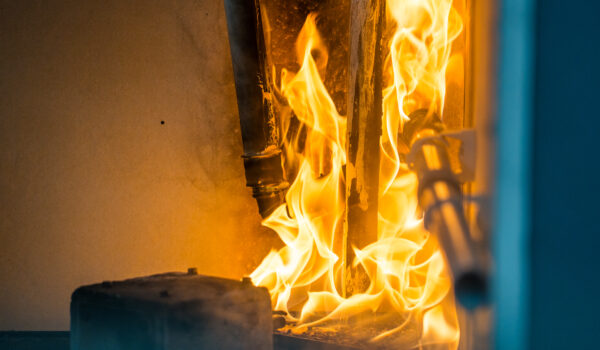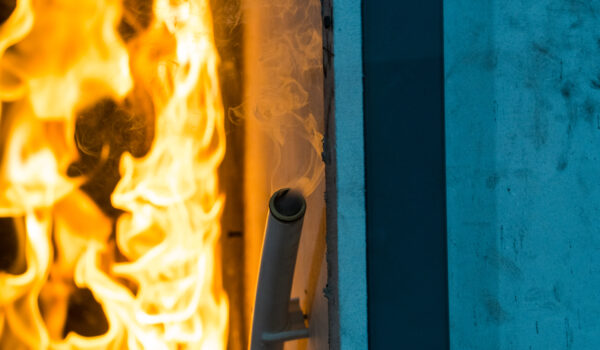Recent research conducted by CuSP has uncovered shocking evidence about the fire safety risks posed by plastic pipes in buildings. The study, part of our “Plastic Under Fire” campaign, highlights the urgent need for both homeowners and construction professionals to reconsider their choice of piping materials.
The Hidden Dangers of Plastic Pipes in Fires
The tests, simulating real-life fire scenarios, compared four common types of pipes: cross-linked polyethylene (PEX), corrugated stainless-steel tubing (CSST), multi-layer composite pipe (MLCP), and copper. The results are alarming:
- PEX pipes completely burned in under three minutes, severely limiting evacuation time.
- CSST pipes produced 761 times more smoke than copper pipes within the first four minutes.
- MLCP generated 248 times more carbon monoxide than copper when burned for eight minutes.
These findings raise serious questions about current building regulations fire safety standards and the widespread use of plastic pipes in construction.
Carbon Monoxide in Home Fires
One of the most concerning discoveries is the amount of carbon monoxide released by burning plastic pipes. In a carbon monoxide fire scenario, plastic pipes significantly increase the risk to occupants:
- MLCP produced 248 times more carbon monoxide than copper pipes in eight minutes.
- PEX generated 209.5 times more carbon monoxide than copper in eight minutes.
Carbon monoxide is a poisonous gas that can cause severe health issues, including headaches, dizziness, and even death. The presence of plastic pipes in a home fire dramatically increases the risk of carbon monoxide poisoning.
Implications for Homeowners
For homeowners, these findings are particularly troubling. The choice of piping material in your home could be a matter of life and death in a fire situation. Consider the following:
- Plastic pipes burn quickly, reducing evacuation time.
- They produce dense smoke, making it difficult to find exits.
- The release of toxic gases, including carbon monoxide, poses severe health risks.
Oliver Lawton, Co-Founder of CuSP, warns: “You wouldn’t light a bonfire inside your home, so why have plastic pipes?”
A Wake-Up Call for Construction Professionals
For plumbers, builders, and other construction professionals, this research demands a re-evaluation of current practices:
- The use of plastic pipes, especially in high-rise buildings, could have fatal consequences.
- Current fire safety building regulations may not adequately address the risks posed by plastic pipes.
- The choice of piping material should prioritise long-term safety over short-term cost savings.
Andrew Surtees, Co-Founder of CuSP, emphasises: “For plumbers, the choice of what pipe they are installing should not just be about what is the quickest or cheapest option – but about the long-term implications for people and the environment.”
The Copper Advantage
In contrast to plastic pipes, copper emerged as the safest option in the study:
- Copper does not burn due to its high melting point of 1,085°C.
- It produces negligible smoke and toxic emissions.
- Copper pipes limit fire spread and produce the least toxic chemicals.
A Call for Change
This research clearly demonstrates that burning plastic releases carbon monoxide and other toxic substances at alarming rates. It’s time for a serious reconsideration of our approach to fire safety in buildings.
For homeowners, it’s crucial to be aware of the materials used in your home and consider upgrading to safer options like copper pipes. For construction professionals, it’s time to prioritise safety over marginal cost and ease of installation.
As we move forward, it’s clear that building regulations and fire safety standards need to be reviewed and updated to address these newly uncovered risks. The choice of piping material is not just a matter of convenience or cost, it’s a critical decision that could save lives.
Discover the full extent of the shocking test results at: https://www.cuspuk.com/fire-safety/plastic-under-fire

